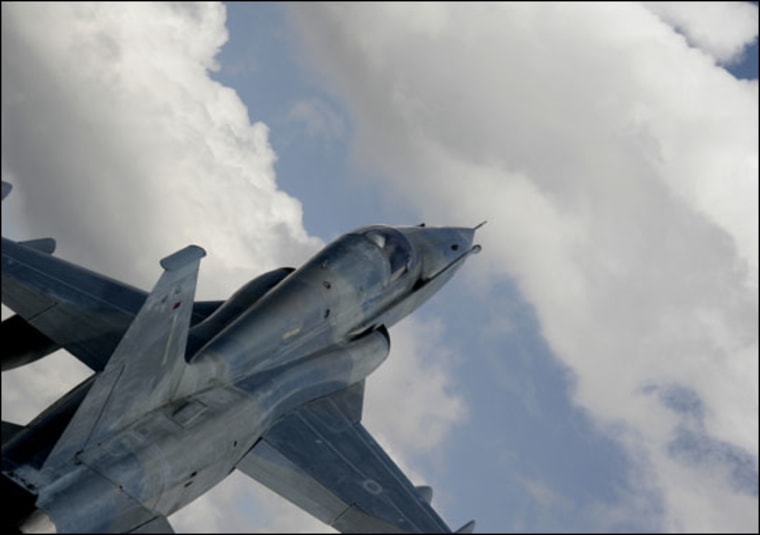The U.S. Air Force may soon be adding some serious bling to its aircraft, in the form of windows made from 80-carat diamonds.
In theory, the windows would protect jets from high-powered microwaves (HPMs) they would themselves produce. The Air Force is vague on the details, but HPM devices aboard a jet could be used to disrupt or destroy enemy electrical systems. The problem is, they could also disrupt systems on board the jet itself.
That's where the diamond comes in.
"In general, windows such as these are required to shield sensors or sources from outside environments," said William Mitchell, a physicist and project manager at Wright-Patterson Air Force Base in Dayton, Ohio. "Diamond is special because it has a very high thermal conductivity, a very wide transparency range, and is strong. These three qualities are difficult to find in any other material."
The proposed windows would be 2.5 inches across and weight between 15 and 17.5 grams.
"Those weights correspond to between 75 and 87 carats," said Mitchell. "For comparison, the Hope Diamond in the Smithsonian is 45.5 carats."
The diamond-based aircraft windows would differ from the Hope Diamond in two big ways.
The first is that the Hope Diamond is a single crystal. The Air Force diamonds would be polycrystalline, with many very tiny diamonds put together. As long as the individual diamonds that make up the larger diamond are much smaller than the wavelength of light shining through them, the diamond's superior optical qualities are maintained, said Mitchell.
The second big difference is how the diamonds are formed.
Instead of crushing a chunk of carbon over millions of years deep in the Earth, the diamond windows will be created in several weeks by spraying carbon atoms over a silicon substrate in a high-pressure chamber, a process known as chemical vapor deposition.
Companies like Apollo Diamond and Gemesis specialize in creating the synthetic diamonds that the Air Force is interested in. Apollo Diamond CEO Patrick Doering said his company plans to submit an invited proposal to the Air Force for the project.
"The critical thing is that you don't want a lot of absorption [of high-powered microwaves]," said Doering. "What can happen is that if a material absorbs too much heat its properties can change, it might absorb more heat, and then you get this runaway situation."
Within seconds, a cloudier material like glass would melt or shatter from the microwaves passing through it.
Combine diamond's optical and thermal properties with its physical strength, more than enough to withstand bird strikes and other physical stresses encountered during flight, and you have a material uniquely suited for a new weapon capable of destroying unshielded electrical systems.
When high-powered microwaves encounter an electrical system, they cause a short-lived but overwhelming power surge.
An electrical system struck by an HPM, or its better-known cousin, the electromagnetic pulse, simply stops working. There is no explosion or sound. Incoming missiles or other aircraft that encounter HPMs, in theory, would just drop out of the sky.
Mitchell says that it typically takes about 10 years for new materials or technology to make it into commercial or military devices, so diamond-encrusted aircraft won't be flying over battlefields anytime soon.
